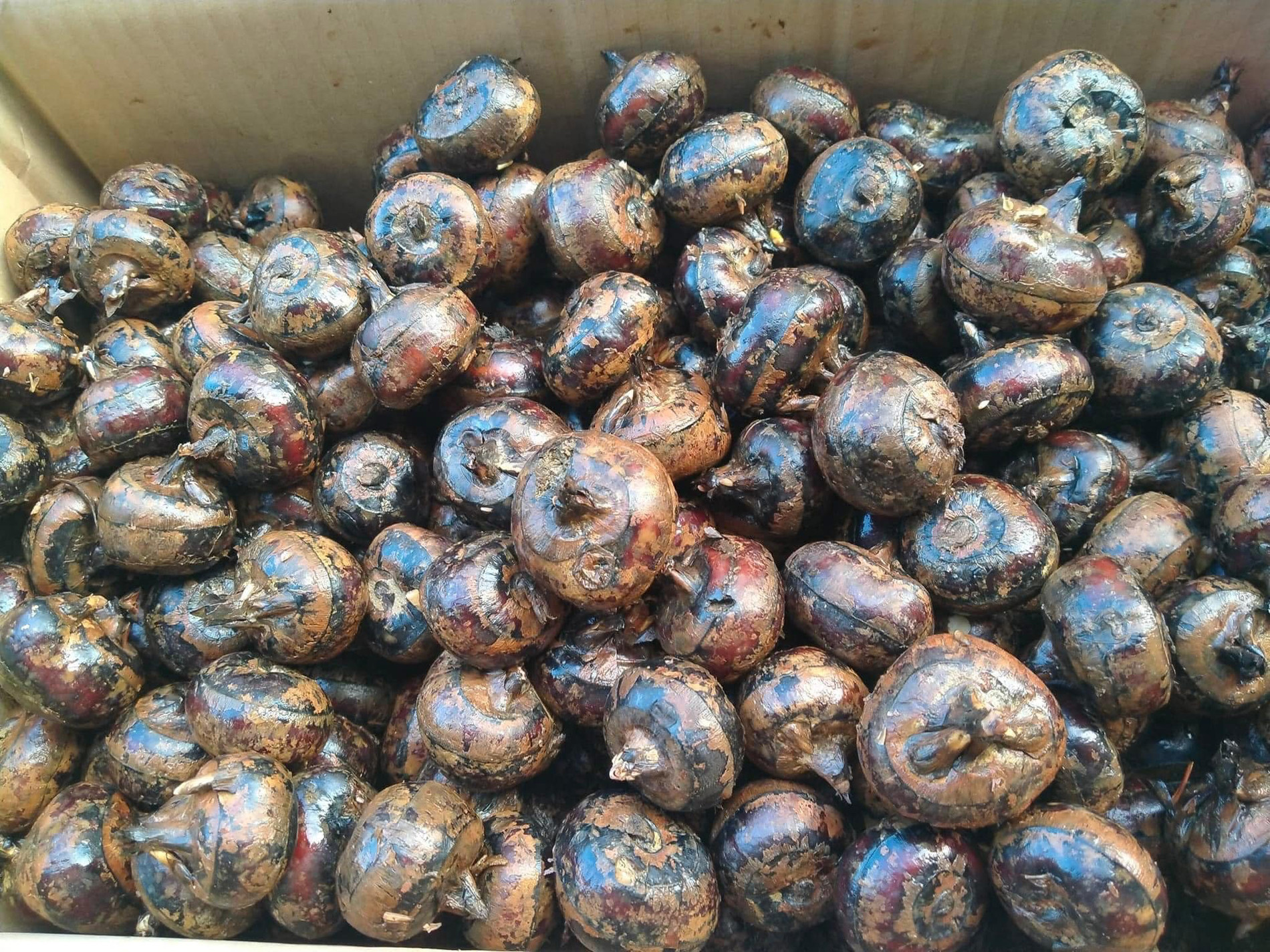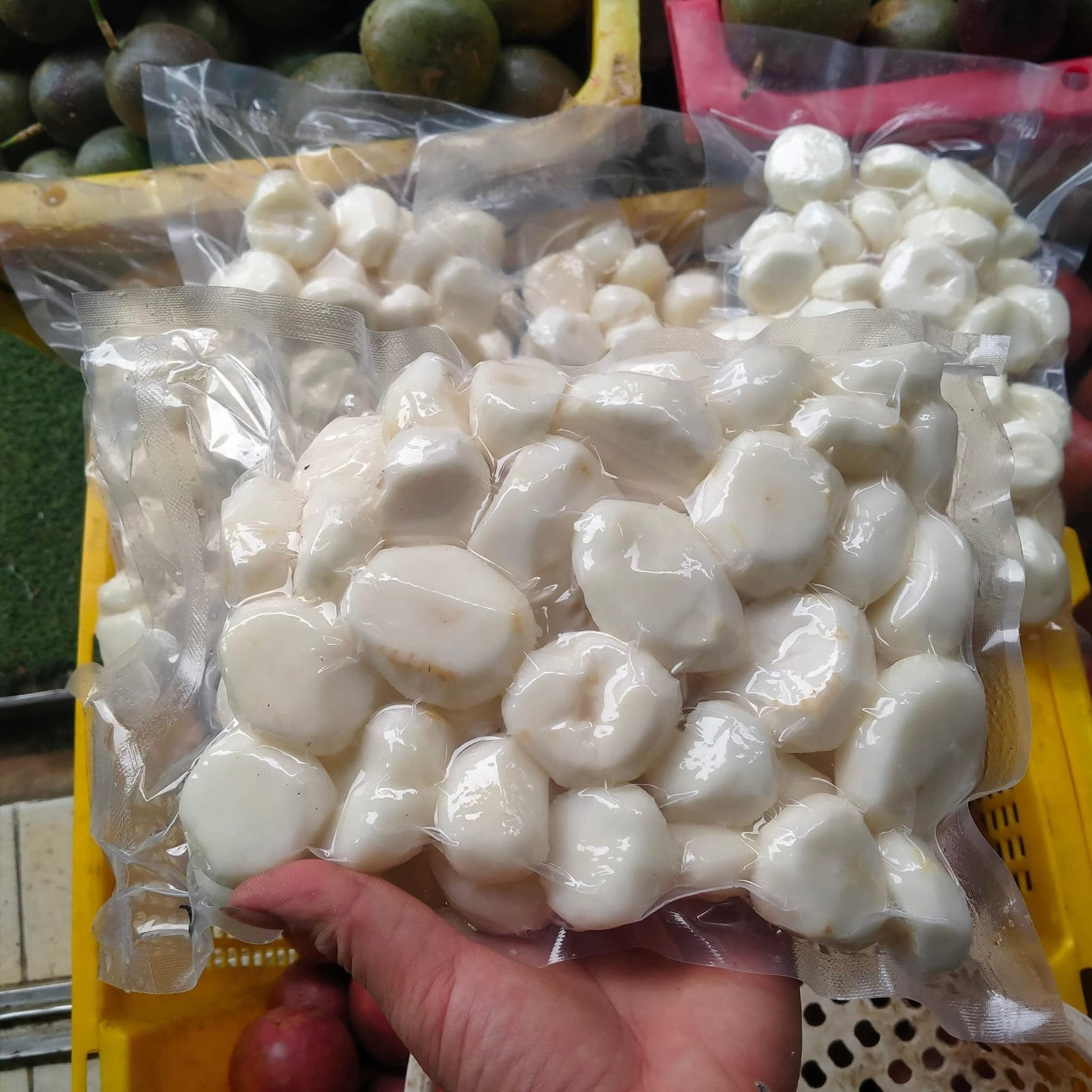Known for its crisp texture and cooling taste, mã thầy - also called water chestnut or bột tề - is a unique underground delicacy that grows across Vietnam and is cherished in both raw and cooked forms.
Whether eaten fresh, simmered in soups, or made into sweet desserts, this humble tuber is a summer favorite for its flavor and health benefits.
Mã thầy is a perennial aquatic herb in the sedge family, thriving in wetlands and low-lying rice fields. It used to grow wild across many northern and southern provinces, but is now cultivated in areas like Cao Bang, Bac Kan, Da Lat (Lam Dong), and the Dong Thap Muoi region due to its rising economic value.
A versatile treat beneath the soil
With its dark brown skin and crisp white flesh, mã thầy resembles a small onion in size. When eaten fresh, it delivers a mildly sweet, juicy crunch, much like jicama, but with its own subtle aroma.
Lan Vu, a merchant in Cao Lanh City (Dong Thap), said mã thầy is typically harvested from November through the following few months, depending on the region. Once pulled from the mud, the bulbs are washed to reveal their distinct brown-black skin.
These roots can be peeled and eaten fresh or turned into a variety of dishes, from cooling herbal teas and sweet soups to savory broths and dumpling fillings. Their natural sweetness enhances the flavor of soups, while their firm bite adds texture to desserts.
“Mã thầy is best enjoyed in summer. It’s naturally cooling and very refreshing,” Lan shared.
Earth-grown medicine
More than a culinary delight, mã thầy is also regarded as a healing food. According to Medicinal Plants and Remedies of Vietnam by Professor Dr. Do Tat Loi, mã thầy is not only nourishing and cooling but can also aid in treating ailments such as excessive thirst, liver issues (like jaundice), internal heat (bloody dysentery, constipation), and eye inflammation.
However, it should be avoided by individuals with weak spleen-kidney function, children prone to bedwetting, or those sensitive to cooling foods. Since it grows in muddy environments, the skin may carry parasites like liver flukes, so it’s advised to thoroughly wash the bulbs and briefly boil them before peeling and consumption.
Today, mã thầy is vacuum-sealed for long-term storage and convenient transport nationwide, ensuring this down-to-earth specialty continues reaching markets and kitchens across Vietnam.
 |
 |
Mã thầy has a dark brown outer layer and crisp, sweet white flesh inside. Photo: Liem Sitting

Freshly cleaned and peeled mã thầy is ready for desserts or soups.
 |
 |

Vacuum-sealed peeled mã thầy makes transport and storage easier. Photo: Thach Lan
